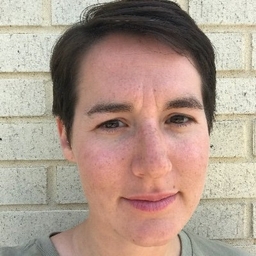-
5 days ago |  actu.epfl.ch | Stephanie Parker
actu.epfl.ch | Stephanie Parker
The course explores the intersection of quantum technologies and sustainability, focusing on how quantum could be applied to sustainability use cases, and on fundamental aspects of thermodynamics in computation. It was created by director of the QSE master’s program, Nicolas Macris, in collaboration with members of the Geneva Science Diplomacy Anticipator (GESDA) Foundation and the Open Quantum Institute (OQI), and the EPFL Center for Quantum Science and Engineering (QSE Center).
-
3 weeks ago |  actu.epfl.ch | Stephanie Parker
actu.epfl.ch | Stephanie Parker
The awardees – Carla Becker, Ekaterina Pankovets, and Qingxin Yang – will complete their master’s projects in the laboratories of Pasquale Scarlino, Vincenzo Savona, and Thomas Vidick respectively. Each will receive up to 10,000 CHF from the QSE Center to help with their studies and expenses.
-
1 month ago |  actu.epfl.ch | Stephanie Parker
actu.epfl.ch | Stephanie Parker
The exhibit “Be Fluid” will take place from 14 to 16 May (11h-18h), with performance on 14 May at 18h30. This project is based, in an experimental, questioning, and original way, on one of the priority research areas at EPFL: health. “I called the exhibition ‘Be Fluid’ like the motto ‘go with the flow’,” Mattenberger says.
-
1 month ago |  actu.epfl.ch | Stephanie Parker
actu.epfl.ch | Stephanie Parker
Please briefly explain the EPFL Enter the Hyper-Scientific Artist-in-Residence program. Enter the Hyper-Scientific was initiated by the College of Humanities (CDH) as a platform for artists and scientists to collaborate on artistic projects. The aim is to foster collaborations between artists and the EPFL scientific community. It is a research-based, project-oriented program featuring both a research phase and the presentation of the resulting works in public exhibitions at EPFL Pavilions.
-
1 month ago |  actu.epfl.ch | Stephanie Parker
actu.epfl.ch | Stephanie Parker
Exactly 100 years ago, in 1925, the term “quantum mechanics” was used for the first time in a scientific publication.
-
2 months ago |  actu.epfl.ch | Stephanie Parker
actu.epfl.ch | Stephanie Parker
You have just defended your PhD thesis. Can you describe your project in a few sentences? This project is all about improving document processing pipelines in a low-resource and very domain-specific environment: commentaries on Ancient Greek works. Document processing is a field of machine learning. It focuses on the steps to go from a physical to a machine-readable document, and to perform higher level textual functions, such as search, on that document.
-
Mar 7, 2025 |  actu.epfl.ch | Stephanie Parker
actu.epfl.ch | Stephanie Parker
Taking place over two-and-a-half days, the conference, co-organized by the QSE Center and the other Swiss quantum centers, featured a diverse array of talks and discussions by researchers of all levels from all areas of quantum research. There were also plenty of opportunites for informal networking during poster sessions, evening drinks, and even a free afternoon of snow sports and spa activities.
-
Feb 27, 2025 |  actu.epfl.ch | Stephanie Parker
actu.epfl.ch | Stephanie Parker
For their CDH Artist-in-Residence Enter the Hyper-Scientific art project, premiering at EPFL Pavilions - Pavilion A on March 19, they have used a game engine to create a “sci-fi documentary” entitled Staring at the Sun, which investigates solar geoengineering and the limitations of climate modelling. To find out more about this project and the research involved, we asked artist Alice Bucknell a few questions:Documentaries are factual, and sci-fi is fiction, seemingly opposing ideas.
-
Feb 24, 2025 |  actu.epfl.ch | Stephanie Parker
actu.epfl.ch | Stephanie Parker
Dancer and performance artist Simona Ferrar is in charge of coordinating these new activites through the conceptualization, organization, coordination, production, and promotion of artistic performances by EPFL students. It expands on the “Improgineering” course given each year since 2017 by Prof. S. Henein as part of the SHS program, in collaboration with artist Joëlle Valterio and the ARSENIC (Centre d’art scénique contemporain).
-
Feb 6, 2025 |  actu.epfl.ch | Stephanie Parker
actu.epfl.ch | Stephanie Parker
Why did you choose to photograph fungi? When I tell someone that I work with mushrooms, everyone imagines a new book on those that we can eat: morels, chanterelle, etc. But in fact, no. 25% of the fungal world is invisible. In the exhibition, I focus on the mycelial network, which is essentially an underground network made of filaments that are of the order of a nanometer. There is this evolution from the filament that manifests itself in the extraordinary force of the living.

actu.epfl.ch | Stephanie Parker
actu.epfl.ch | Stephanie Parker
actu.epfl.ch | Stephanie Parker
actu.epfl.ch | Stephanie Parker
actu.epfl.ch | Stephanie Parker